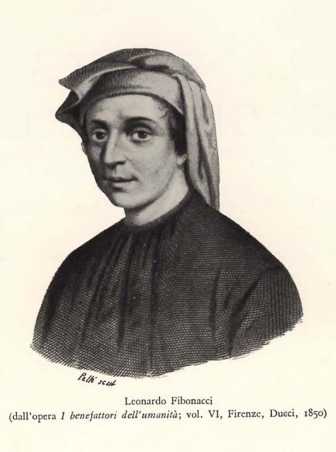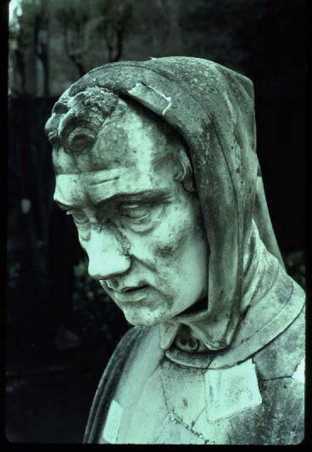Biography of Leonardo of Pisa
Little is known about the life of Leonardo of Pisa, also called Fibonacci. It is assumed that he was born around 1170 and died after 1240, probably in Pisa. There is an original document from 1241 in which the city of Pisa grants Fibonacci a pension. From this time onwards, little or nothing is known about his life.
Private scholar and mathematical writer
Fibonacci's father ran a Pisan trading post in Bugia in present-day Algeria. It was there that Fibonacci got to know the Indo-Arabic numeral system from an Islamic teacher and became enthusiastic about it. Extensive journeys to the Orient gave Fibonacci the opportunity to expand and deepen his mathematical knowledge. Around 1200 he returned to Pisa where he lived as a private scholar and mathematical writer. In 1202 his most important work was completed, "Liber abaci", an encyclopaedic arithmetic book, which disclosed arithmetic methods to the Western world on the basis of the Indo-Arabic place-value system.
Corner-stone of a new beginning of applied mathematics
Leonardo of Pisa is now known almost exclusively under his byname Fibonacci, which immediately awakens association with the Fibonacci sequence named after him. His real significance resides, however, not in the discovery of this sequence of numbers but in the fact that studying ancient science and encountering Arab mathematics led him to produce a number of writings that laid the foundation of a new beginning of applied mathematics in Europe. A particular biographical constellation resulted in Fibonacci coming into contact on countless journeys with the mathematical knowledge of various cultures. He combined the knowledge he acquired with his own thinking and committed the entire store of knowledge to paper on his return home.
His most important achievement was the comprehensive representation and explanation of arithmetic with Indo-Arabic numbers, which at that time were not yet in use. For many, Leonardo of Pisa is regarded as the most important mathematician of the Middle Ages.
Fibonacci's handed-down works
- external page "Liber abaci" (1857 edition), the "Book of arithmetic" (completed in 1202; reworked in 1228): introduction to Indo-Arabic numbers and explanation of arithmetic operations on the basis of the decimal place-value system; practical problems and rules for trading (English translation, 2002)
- external page "Practica geometriae" (1862 edition, written in 1220): basic terms of Euclidean geometry and geometrical practice (measurement, surface and volume formulas for plane and solid figures)
- "Liber quadratorum", the "Book of square numbers" (written in 1225): properties of square numbers and problems that lead to quadratic equations; the most important work on number theory between Diophantus and Fermat
- "Flos" (written around 1225) and "Epistola ad Magistrum Theodorum": solutions to algebraic equations

